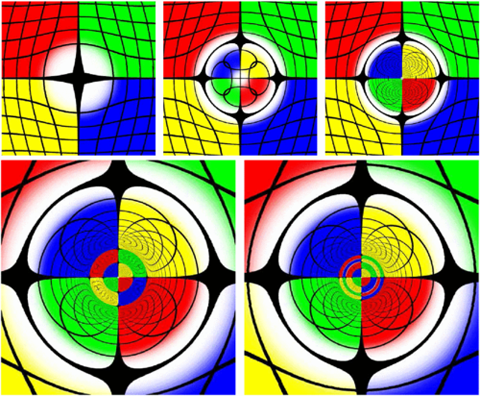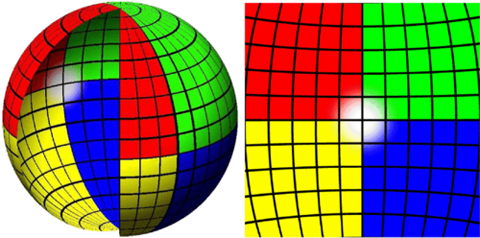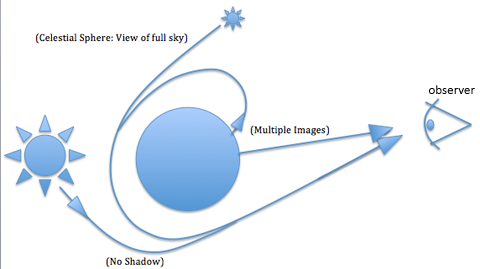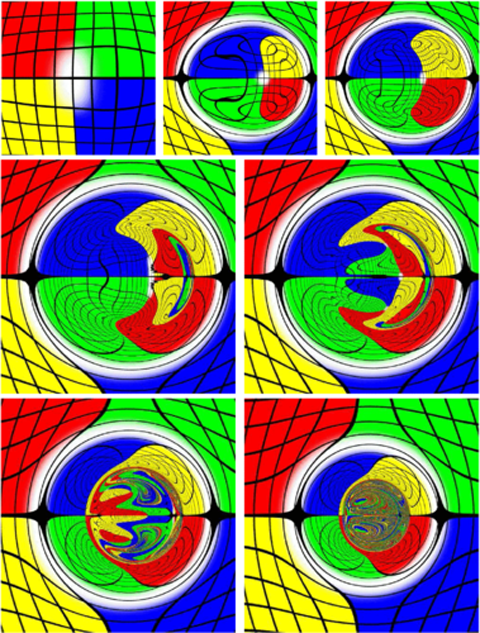Too Big to Cast a Shadow

January 20, 2016
One of the most well-known ideas in astrophysics—the black hole—is a region of space around an extremely massive object where the gravitational pull is so strong that not even light can escape. Beyond the boundary of this region, however, light still feels the pull of the object’s enormous gravity, and the light’s direction of travel changes accordingly, the same way a satellite can have its trajectory bent by the pull of a close-passing asteroid.
You don’t have to be a black hole to bend light, though—any mass curves space and bends light as a result. For everyday things, the effect is too subtle to notice. However, stars like our sun are massive enough to deflect the path light takes, as was famously observed during the 1919 solar eclipse that proved Einstein’s theory of general relativity. When mass redirects a ray of light, the process is called gravitational lensing. Much like the lenses in a pair of eyeglasses, gravitational lenses can shift or distort the appearance of objects behind them, leading to strange phenomena like Einstein Rings and double-images.
The image above is a representation of what you might see looking at an ultra-dense type of matter called a boson star, which so far exists only in theory. The various colors represent different quadrants of the sky, as demonstrated in the image below:

When looking at something as dense as a boson star, you get a 360 degree view of the sky, thanks to gravitational lensing.

Simulations of rotating black holes and boson stars produce even stranger results. Some parts of the sky appear multiple—or even infinitely many—times!















